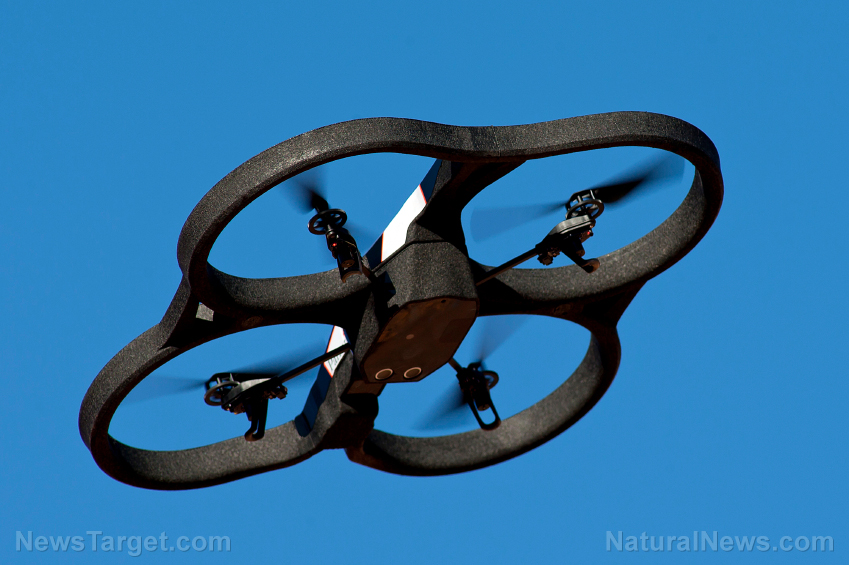Oceans can no longer protect America as space and cyber technologies continue to grow worldwide
06/11/2024 / By Ava Grace

While the U.S. military remains arguably the most sophisticated in the world today, Russia and China are quickly developing technologies that could interfere with – and even take out – U.S. satellites.
Space is “really a great enabler and has changed the speed of how we’ve been able to fight,” Makena Young of the Center for Strategic and International Studies (CSIS) told Axios. (Related: China creates MICROWAVE CANNON that can fire high-power microwaves to disable satellites.)
A report from the Financial Times revealed that China is developing cyber capabilities that would allow the nation to “seize control” of satellites, making them effectively useless.
The U.S. military has historically relied on big, expensive satellites in orbit that are designed to collect exquisite images and other data but make for valuable targets for adversaries. The U.S. is also working to move toward a more resilient network of satellites prioritizing speed, efficiency and even leveraging commercial satellites, only building what they need to build and buying services otherwise.
“The problem has not been their speed of development. The problem has been how slow our response has been.” That slow pace is largely due to American politics, Weeden added, saying that getting the buy-in and budgets needed to change how parts of the Department of Defense do business can be difficult.
“But that’s not going to really work now because the pace of evolution is so fast that if you take 10 years, 20 years to build something, it’s outdated before you launch it,” John Plumb, assistant secretary of defense for space policy, told Axios at the Space Symposium in April.
The longtime national security strategy that relies on protection provided by the Atlantic and Pacific oceans is now being rattled by these weapons that conquer vast distances. America has long had the edge in space and cyberspace, but China and other powers are closing the gap.
A global surveillance showdown is underway. Hackers tied to the People’s Liberation Army abscond with countless files detailing stateside arsenals. Other saboteurs stalked critical infrastructure, including in Guam, a key U.S. foothold. A digital onslaught there would sap military responses in the Indo-Pacific.
Russian hacks plagued Ukraine, earning it a “testing ground” moniker. U.S. lawmakers expressed concern about spillover in the months following the 2022 invasion. North Korean cyberattacks rakef in money and other assets, funding the regime’s weapons programs.
A record-setting 2,877 spacecraft were launched in 2023. While most were attributed to the U.S. and its booming commercial sector, Chinese and European numbers were on the rise.
Both China and Russia have made strides in developing space weapons that could knock out satellites essential to navigation, overhead imaging and long-distance communications. Destructive testing of anti-satellite weapons has also produced dangerous debris.
New AI system can spot “strange” satellites
Meanwhile, a new AI system can spot satellites acting strangely in the increasingly congested orbit around Earth and that could be malfunctioning or have more nefarious purposes.
Companies are announcing plans to launch large constellations in the coming years, potentially putting more than one million satellites in space. And governments are increasingly investing in space-based electronic warfare tools, anti-satellite weapons and other spacecraft for national security that could be concealed in the mix.
“This isn’t some hypothetical problem,” said Audrey Schaffer, vice president of strategy and policy at Slingshot Aerospace, which developed the new AI tool with funding from the Defense Advanced Research Project Agency (DARPA). “We think this tool is very powerful for addressing near-term security challenges.”
The system – called Agatha – identifies anomalous behavior in a constellation and then deduces the strategies and intentions of suspect satellites.
Instead of looking at a single satellite and determining how its behavior is different from what would be expected of it, Agatha identifies small differences in how a satellite is behaving compared to large numbers of other satellites in a constellation.
Agatha can also detect unusual communication patterns. Rather than having uplinks and downlinks around the world, an espionage satellite might only be communicating with a handful of ground stations in the host country or allied countries.
“We are rapidly approaching a moment where no human or team of humans would be able to monitor all activity in space, let alone these minute differences,” Schaffer said.
Visit FutureTech.news for more stories like this.
Watch this video about the top 10 reasons why the U.S. Navy aircraft carrier is the safest place to be in war.
This video is from the US Military Technology channel on Brighteon.com.
More related stories:
U.S. Space Force: China and Russia are CONCEALING THREATS posed by their satellites.
Whistleblower: UFOs an OPEN SECRET in the US military.
Former Space Force officer: WOKE AGENDA weakening, dividing US military.
US military experimenting with artificial intelligence that can predict the future.
Sources include:
Submit a correction >>
Tagged Under:
AI, anti-satellite weapons, big government, chaos, China, computing, cosmic, cyber war, cyberspace, future science, future tech, Glitch, information technology, inventions, military tech, national security, North Korea, Russia, self-defense, space, Space Race, space war, space weapons, US, weapons technology, World War III
This article may contain statements that reflect the opinion of the author
RECENT NEWS & ARTICLES
COPYRIGHT © 2018 CYBORG.NEWS
All content posted on this site is protected under Free Speech. Cyborg.news is not responsible for content written by contributing authors. The information on this site is provided for educational and entertainment purposes only. It is not intended as a substitute for professional advice of any kind. Cyborg.news assumes no responsibility for the use or misuse of this material. All trademarks, registered trademarks and service marks mentioned on this site are the property of their respective owners.



















